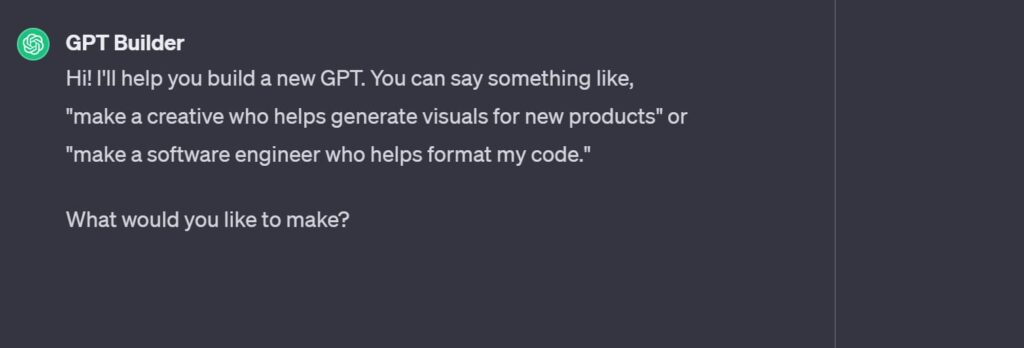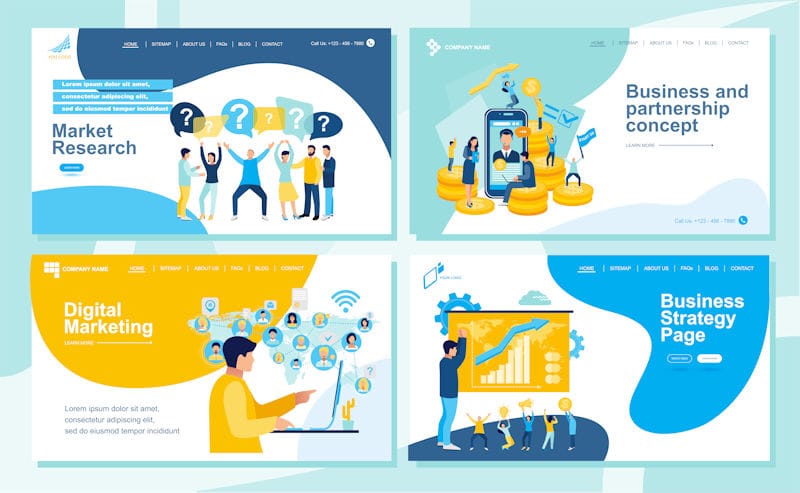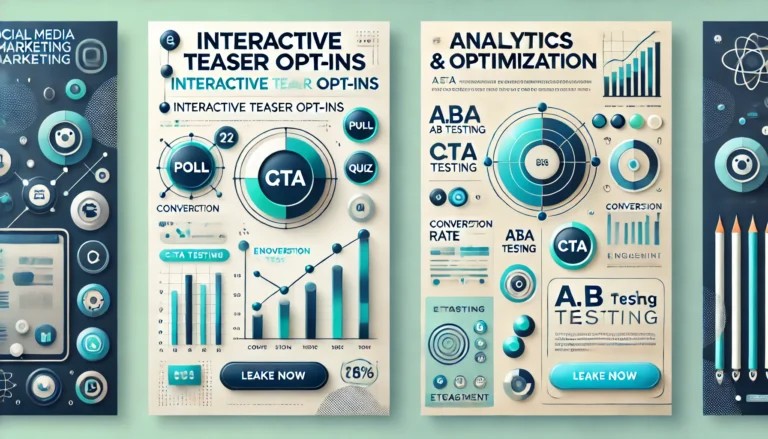Build your Custom GPT.
Far too often, bloggers have been unable to be competitive in the online marketplace due to a bias towards tech savvy individuals. Those who find it challenging to grasp coding and other technical concepts either have to spend weeks or months learning how to do something – or pay money to have the work done for them. In the mean time the tech savvy geeks, race ahead of the competition. No more – now you can build your custom GPT
What is a GPT?
A GPT stands for Generative Pre-trained Transformer. In simpler terms, it is an artificial intelligence system that has been trained on vast datasets to generate helpful content and output.
GPTs can understand written language, answer questions, summarize long articles, write original essays, translate text, and much more. The most well-known GPT currently is ChatGPT.
ChatGPT is a broad, general-knowledge version developed by OpenAI. It’s free to use but has some limitations. There are also paid subscription plans called ChatGPT Plus and ChatGPT Enterprise, which unlock additional capabilities.
One of these premium features is the ability to build customized GPT focused on your niche, business needs, writing style, tone and SO MUCH more.
What can Personalized GPTs be used for?
Writing and Content Creation
One of the most popular GPT uses is generating written content like blog posts, social media updates, newsletters, product descriptions, website pages, presentations, and more. The AI can craft high-quality drafts tailored to specific topic guidelines that human writers can edit.
ChatGPT is a content ideation and knowledge assistant for marketing teams, research staff, copywriters, and other roles requiring regular written deliverables. Its ability to rephrase, expand, or rewrite content also assists with localization and adapting global content.
Customer Service
GPTs are extremely helpful in customer service scenarios by providing canned response drafts for common questions. Queries can be categorized by theme (returns, shipping, tech issues etc) and used as FAQ content easily adapted across new inquiries.
Since GPTs can answer in a conversational style, they enable more natural customer interactions while reducing repetitive human efforts, boosting efficiency.
Data Processing
Processing large volumes of content is another key use case. A GPT’s superior speed and accuracy at scanning, digesting, and summarizing lengthy reports, research studies, articles, or transcripts deliver quick wins for overloaded teams. Whether creating executive summaries, pulling critical data, or translating documents, GPT takes care of the grunt work rapidly and efficiently.
Transcription and Translation
Converting audio and video files into text transcripts is simple for GPT tools. They can identify speakers and summarize hours of content into usable transcripts for searching, quoting, or subtitling media much faster than manual work. GPT also excels at translating text between languages which is hugely valuable for global organizations.
Coding Assistance
While not a substitute for human coders, GPT is very handy for suggesting related frameworks, libraries, APIs and code snippets to assist developers based on their comments and needs, serving as a knowledgeable sounding board. It can save research time, overcome coding blocks, and provide examples for creative experimentation or adaptations.
Ideas and Innovation
Finally, GPT delivers excellent ideas, giving support and creative jumps for teams in need of fresh concepts by analyzing past successful deliverables and suggesting on-theme extensions. It serves as an innovation assistant rather than a sole driver, working best in combination with uniquely human input and judgment.
Why Would Content Creators Need a GPT?
GPT, to the average person, is an intuitive artificial intelligence (AI) system that you can have a conversation with, and it will produce the results you ask for. Need it to give you ideas or write an article for you?
It can do that. It can create plans, conduct and deliver research, analyze data, simplify or improve things, repurpose them, and more. Do you need a GPT in your life? Of course not – but it does have many benefits for you.
Saving time and money are the first and most obvious benefits. You don’t have to hire a ghostwriter or graphic designer when you have a GPT tool working for you. But it also acts as a supplement to your natural creativity and knowledge.
“AI is a mirror, reflecting not only our intellect, but our values and fears.“
– Ravi Narayanan, VP of Insights and Analytics, Nisum
It knows more than you, can gather and analyze data at a speed you can’t fathom, and the quality of the content and other deliverables far exceeds what many humans can create themselves.
GPT is a machine learning system trained on data and can understand human intent in language. The responses don’t sound robotic – they sound like a person wrote them as if you had an assistant sitting beside you helping you complete your task list.

Building Your Own GPT.
The Plus version costs approximately $20 per month, and with that level of use, you have access to the OpenAI custom GPT builder. From there, you can create multiple tailor-made GPT systems for yourself or to share with others, or even sell.
This is a straightforward process that doesn’t take much time and doesn’t require any technical skills. Log into ChatGPT and click your name in the left sidebar. This will open up your custom GPT builder, with a split screen showing your builder on the left and a preview of what you’re building on the right.

Then click on Create a GPT. Now, you’ll see a new dashboard where the intuitive AI will walk you through the process in a friendly manner. Start by telling it what you want your GPT to do.
For this example, I will use the prepping/ survival niche. I assume you want to create content, including product reviews, blog posts, emails, info products, etc. Just tell it in simple wording, like this: “I want to create a GPT that specializes in survival prepping and homesteading content.”
It’s very straightforward, so don’t try to overthink these steps. The tool then updates and gives you a name idea, in this case the Survival Story. You can accept it or ask for other ideas. Next, it delivers an idea for an image for your GPT. Again, take what it suggests or ask for something different.
You can upload your image if you prefer. The next thing it will ask you to do is clarify the role and goals of the GPT. It tells you how it sees it right now: “an expert in providing detailed, practical advice on survival prepping and homesteading for newbies.”
Making Specialist Suggestions
It also asks if we want it to specialize in any areas like urban survival skills, wilderness survival, or a balance of all of them. We’ll tell it we want it to know all about survival, but you could also specify that you only want off-grid, winter survival, bug-out survival, etc.
Here are some examples of areas you can specify when customizing a survivalist/prepping niche GPT to focus its knowledge and recommendations for living off the grid:
Location/Climate Specialization
- Recommend gear, materials, and architecture best suited for deserts, tropics, mountains, cold climates, coastal regions, etc. based on your retreat location
Homesteading/Growing Food
- Suggest crop varieties ideal for the growing zone and seasonal conditions
- Techniques for raising livestock like chickens, goats, and cattle in remote areas
- Foraging knowledge localized edible plants, mushrooms, and wild foods
Water Access/Purification
- Methods to harvest rainwater, extract moisture, tap springs and natural sources
- Filtration, sterilization, distillation processes fitting contexts (streams, wells, etc.)
- Storage and conservation principles
Energy/Utilities
- Selecting sustainable power like solar, hydro, wind etc. for the property
- Setup and repair of independent systems and backup batteries/generators
- Maintaining gas, electrical, septic functionality
Health/First Aid
- Treatment guidance for likely medical issues facing off-grid families
- Herbal remedies from regional plants and nature’s pharmacy
- Emergency medical skills, anesthetics, and lifesaving techniques
Security/Defense
- Reinforcing property perimeter with natural barriers and detection systems
- Protecting against dangerous wildlife threats in the locality
- Firearm and weapon recommendations subject to state laws
- Community alliances for mutual assistance
Testing the parameters
Testing parameters upfront allows your custom GPT to become an expert on the realities of sustainable off-grid living aligned specifically to your situation versus generic guesses. Keep customizing until it reliably dispenses niche advice.
Tailor it in a way that works best for you. It will ask what it should avoid or emphasize if you have any preferences, like avoiding sensitive topics. Next, it asks how it should interact with your users – like asking for clarification or assuming what the user needs.
Lastly, it wants to know the personality you want it to have. This is asking what tone you want it to adapt. You can ask for serious, motivational, friendly, encouraging, academic, etc. You can set the tone and interaction any way you’d like it to appear to the user.
Testing, Tweaking, and Sharing Your Custom GPT
Your last step is to test out your new custom GPT. On the right side is the preview playground. It has built-in prompts, or the user can type something in. How does the result look? Your custom GPT builder will want your opinion on adjustments if needed.
Click on the Configure tab to change the GPT image, name, description or instructions. You can return to this area at any time to tweak your GPT for better performance. This means it is not written in stone; try it out for size and then modify or tweak it later.
For example, if you notice the articles are always short, give instructions for a specific word count. Or if it’s consistently delivering lists, tell it to use paragraphs unless instructed to use a list. If there are too many colons in the title, ask it not to use colons.
You can change the prompts that automatically show up for users on their dashboard or leave them as is. You can even delete them if you don’t want them to have anything to start with.
You can upload your files in the Knowledge area. You can do that here if you have content that you feel is a good training and data source for your GPT tool to understand.
Whenever you’ve finished creating and tweaking your custom-made GPT, you can look at the upper right side of the page and click on the Save button to save it for only you, people with a link, or the public.
The Faqs About GPT.




Concluding the Advantages of how to build your GPT
The ability to customize branding lends significant advantages, allowing niche GPTs to integrate within existing interfaces as trusted extensions rather than disjointed bots, building loyalty through accuracy and personality mirroring, necessitating ongoing supervision as assistants continue learning over time to shape behaviors meeting ethical standards and evolving needs at scale, freeing human collaborators to focus innovation on complex challenges that will ultimately determine industry leadership as rapid technological disruption concentrates the influence of those harnessing AI as multiplying force multipliers.






